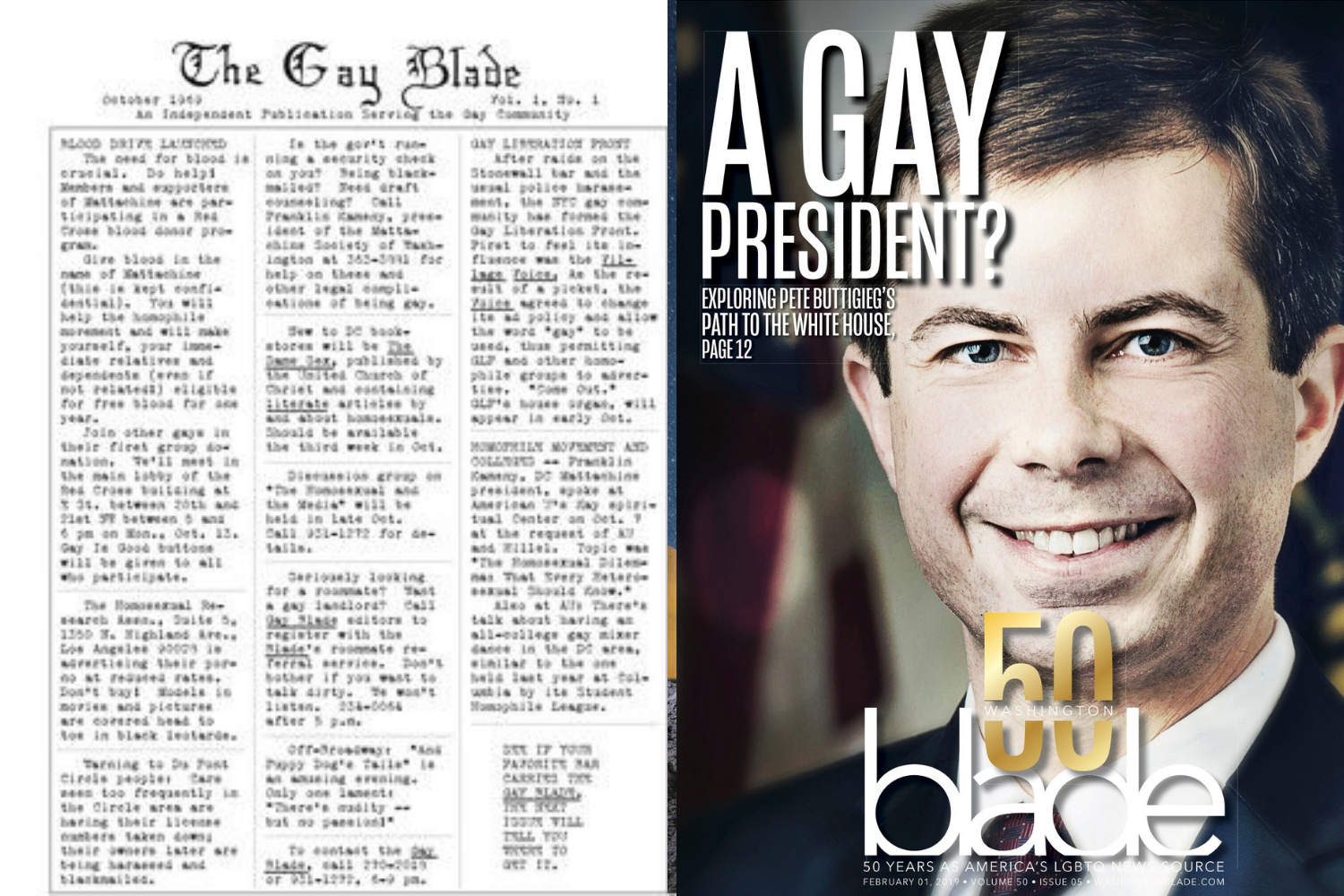This year, The Washington Blade is celebrating its golden anniversary not just during pride month, but throughout the entire year. Just 10 years ago, however, it seemed uncertain whether the nation’s oldest surviving LGTBQ newspaper would make it to its fifth decade.
In 2009, the newspaper’s parent company, Window Media, declared bankruptcy. Along with The Blade, the Atlanta-based company shut down The Southern Voice, The South Florida Blade, and other LGBTQ publications.
Blade veteran Lou Chibbaro said the news about the nation’s LGBT paper of record, where he has spent most of his career, was abrupt. Staff were not given advance notice of the owner’s decision.
“At the time, we were in the National Press Building,” Chibbaro said. “We got one day’s notice. We had to empty out our desks and leave the office.”
Staffers, including current publisher Lynne Brown and now editor-in-chief Kevin Naff, worked quickly to preserve The Blade. They launched their own newspaper, The D.C. Agenda, and released the first issues on a Friday, when new editions of The Blade would normally be distributed, so there was no lapse in publications.
A groundswell of support erupted; readers were dismayed to hear of the sudden shutdown. Donations poured in from countries around the world, and officials like Delegate Eleanor Holmes Norton (D-D.C.) urged the community to rally behind The Blade’s former employees.
“We had people donating money from Turkey, from France, from England,” Naff said. “We heard from readers all over the world that we never knew about.”
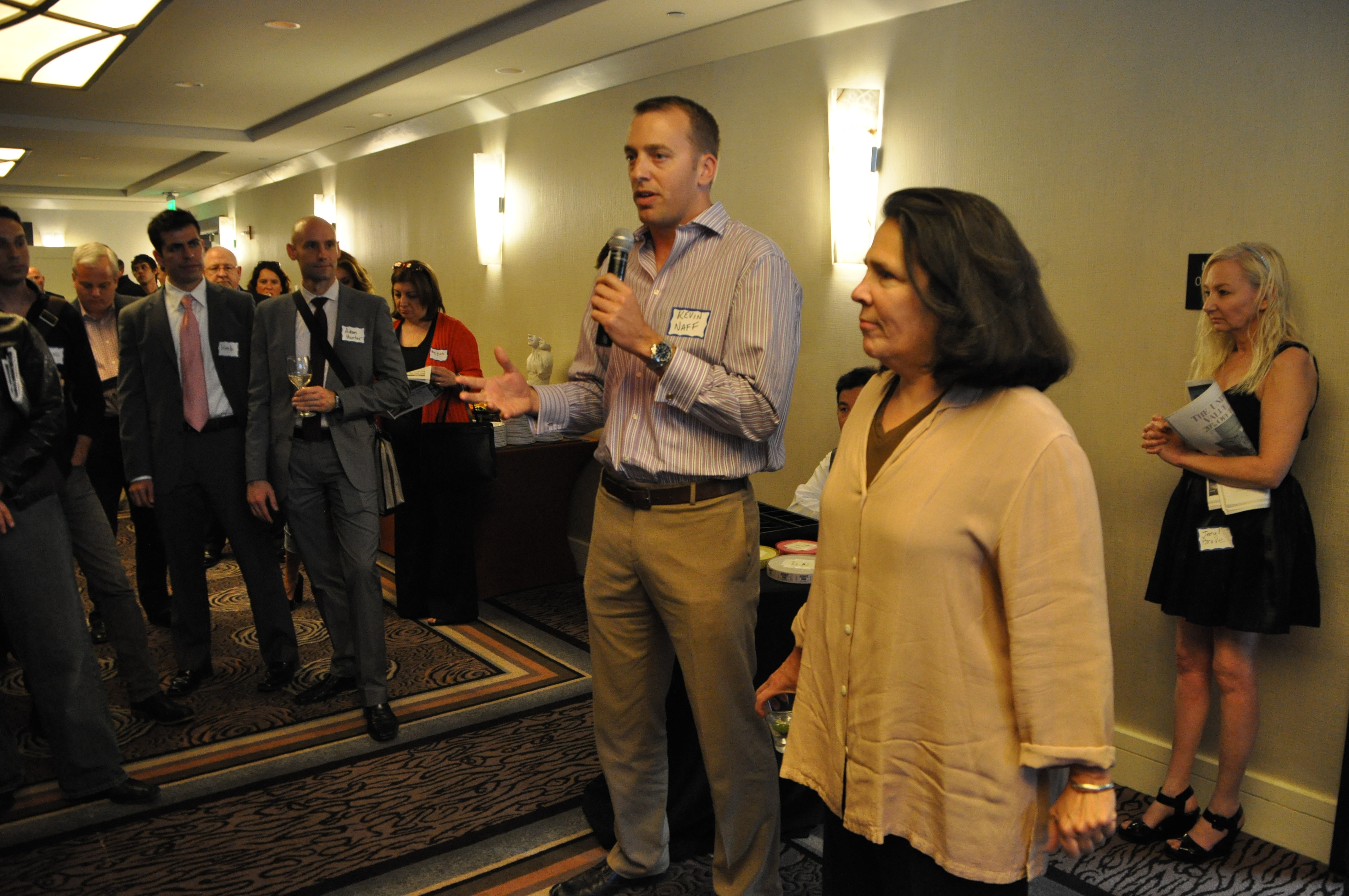
Within a year, The Blade’s former staffers bought the rights to the paper’s original name, as well as its assets, for a mere $15,000. That purchase not only gave the staff ownership over The Blade’s print archives, but allowed them to resume publication under a more familiar masthead.
The outpouring of support The Blade received after the bankruptcy was a tangible manifestation of how important the publication had become to the LGBTQ community and to the nation. Since its start, The Blade has served as a valuable source of information, both for the community it serves and those who fall outside it. Often, Naff said, The Blade covers the discriminatory policies and societal challenges facing the LGBTQ community long before the national press catches on. The paper continues to play an important role in covering hate crimes, for example, and in documenting the lived experiences of public figures who may otherwise be “straight-washed” by conventional coverage.
[the_ad id=”667826″]
“Where The Blade goes, the mainstream media follows,” Naff said. “That’s always part of what we do, is educate mainstream reporters about the community … and the challenges facing the community, because we want them to follow us. We want them to cover these stories.”
Since January, the publication has been ringing in its semicentennial with a bevy of parties, seminars and projects, including a black-tie gala slated for October and a digital archiving project carried out in partnership with the D.C. Public Library. The Blade has also redesigned its print edition, and is using the anniversary as an opportunity to highlight the ways its coverage has expanded since its start as a single-page newsletter.
Brown said The Blade’s anniversary is a celebration not just of the paper’s continued existence, but of the symbiotic role it plays, by both documenting the community’s concerns and by shaping the national conversation about LGBT rights.
“It’s a little chicken and egg,” she said. “Do we make the community better by existing or does the community coalesce around us and we capture that?”
Humble beginnings
The first issue of The Washington Blade, then called The Gay Blade, was released in October 1969, nearly four months after the riots against police violence at the Stonewall Inn in Manhattan, New York. Distributed through local gay bars, The Blade’s contents advertised basic amenities for the LGBT community, as well as warnings that might help readers avoid “the legal complications of being gay.” One entry warns frequenters of DuPont Circle that their license plates were being recorded and tracked for blackmail purposes; another entry celebrates the Gay Liberation Front’s picketing victory, in which the group convinced The Village Voice to allow the word “gay” in its publication.
[the_ad id=”667872″]
Nancy Tucker, one of the founding editors, told The Blade that the concept for the LGBT newspaper came from members of the Mattachine Society, an early lesbian and gay rights group that was active in major cities at the time. The early broadsheet they pioneered bears little resemblance to the present paper, which boasts a print circulation of roughly 30,000 and an online readership of 250,000 unique viewers a month.
When Chibbaro first started writing for the paper as a freelancer in 1976, his work appeared under the byline “Lou Romano.” Chibbaro was one of several journalists at the Blade who used pseudonyms to protect their identities. Though many writers used an alternative byline as a protection against discrimination, Chibbaro said he did so because his full-time jobs, first at a now-defunct newsletter company and later at the American Public Power Association, forbade him from writing from other publications. He later decided to drop the pseudonym after covering a devastating fire at an adult theater, the Cinema Follies, in which nine closeted men died.
“Many of the victims were not known to be gay by their families, and certainly not by their employers,” Chibbaro said. “Shortly thereafter that I said, ‘It’s time to use my real name,’ and I did.”
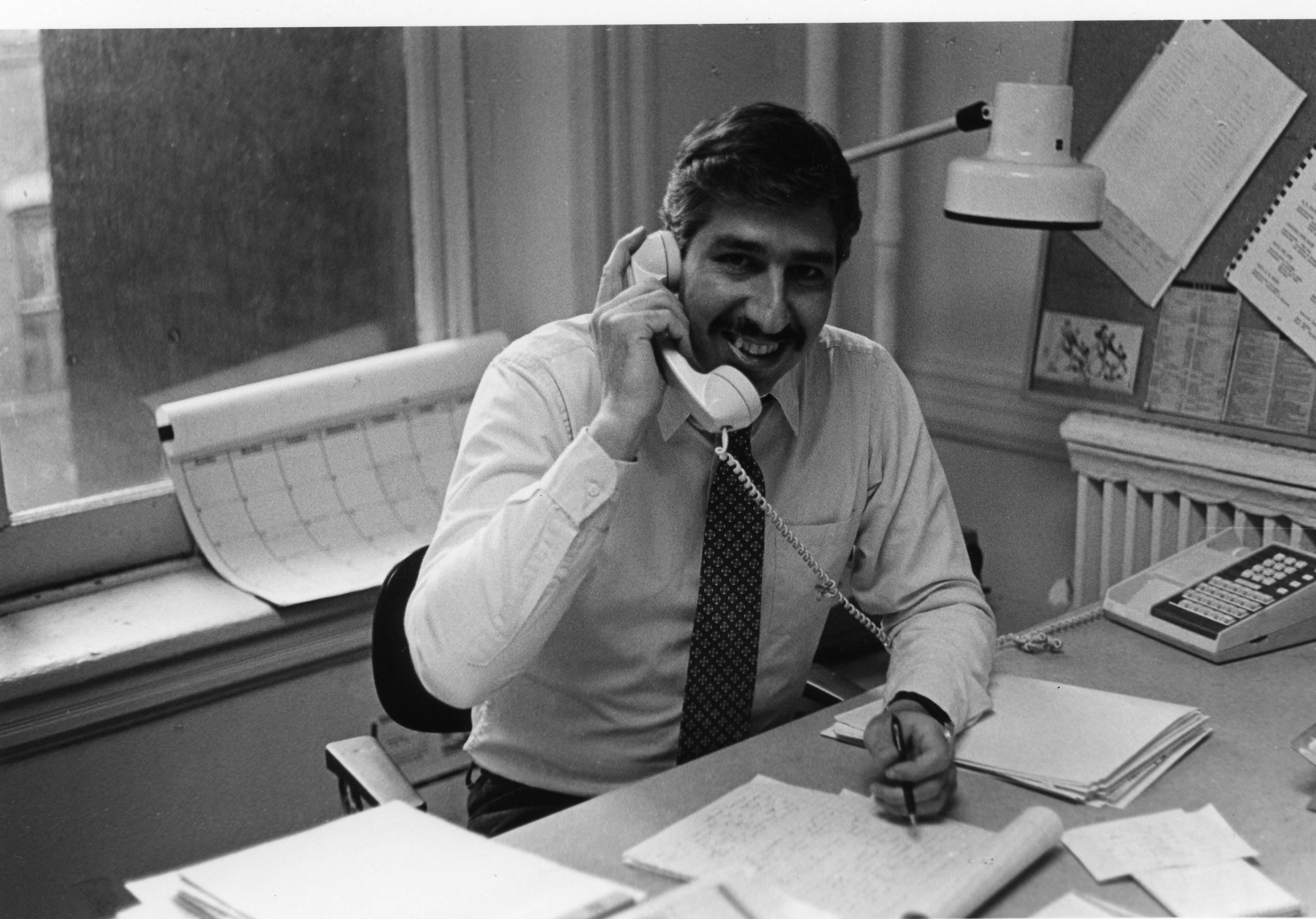
In the early 1980s, Chibbaro joined The Blade as a full-time staff reporter. He now serves as the paper’s senior news reporter, covering everything from public safety news to politics.
Community engagement
One particular service that Chibbaro and other reporters at The Blade have provided is their thorough efforts at documenting the lives and deaths of LGBT people through obituaries. Writing obituaries became a particularly harrowing task for the paper in the ’80s, when the AIDS crisis began devastating the LGBT community.
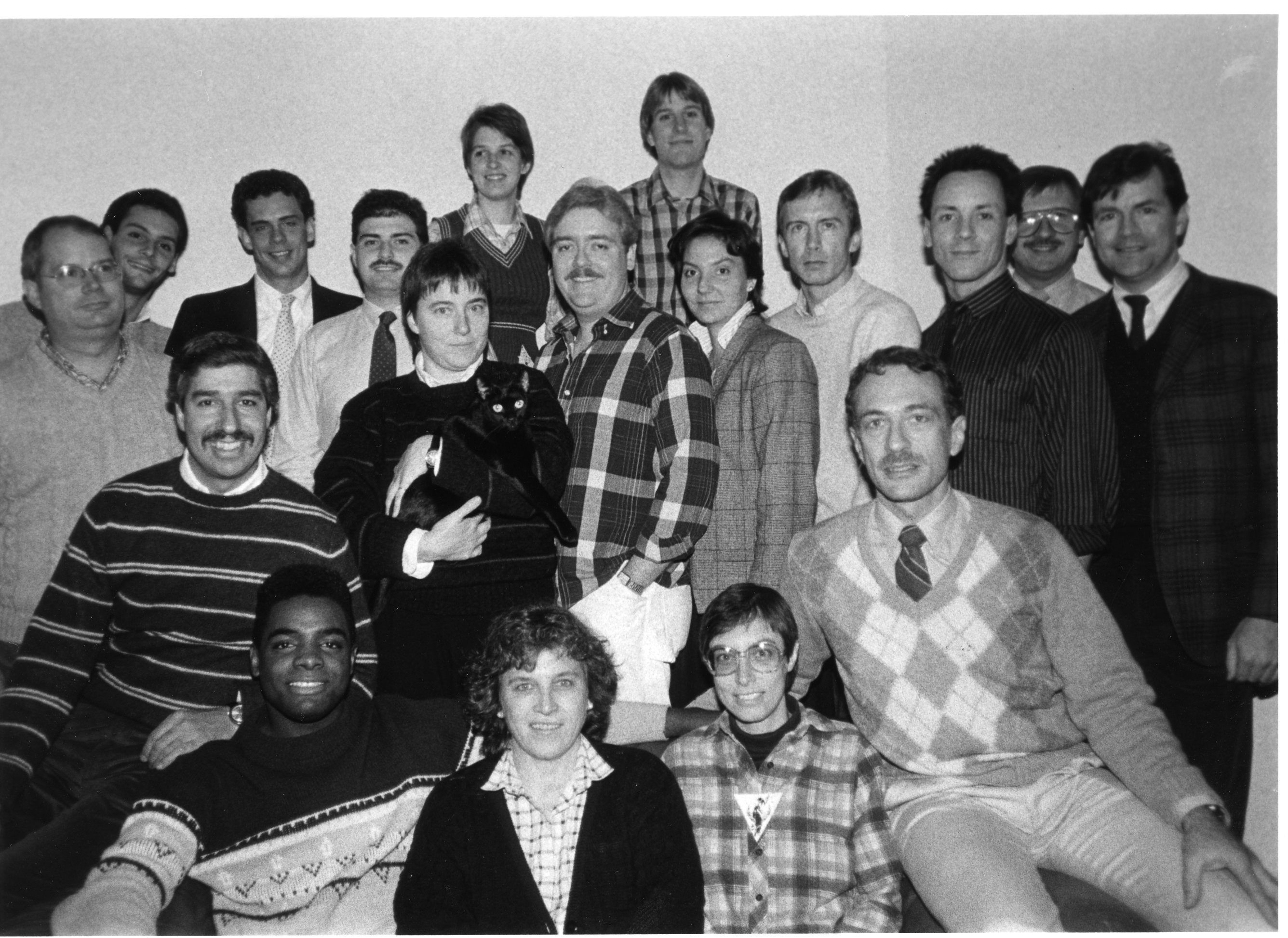
“In the late ‘80s and early ‘90s, there were so many obituaries that were published that it’s staggering,” Naff said. “There was an issue of The Blade where there were no obituaries that week and it was the lede headline. That’s how overwhelmed the community was, and how focused The Blade was on covering the epidemic.”
Publishing obituaries of community members especially plays an important role in helping partners and families settle their loved one’s estates, Brown said. The Blade still offers free obituaries to the community, and also allows its readers to submit legal notices of other kinds; in particular, the transgender community in D.C. has benefitted from that service, Brown said. Courts often require people who are changing their names to submit public notification in a local publication.
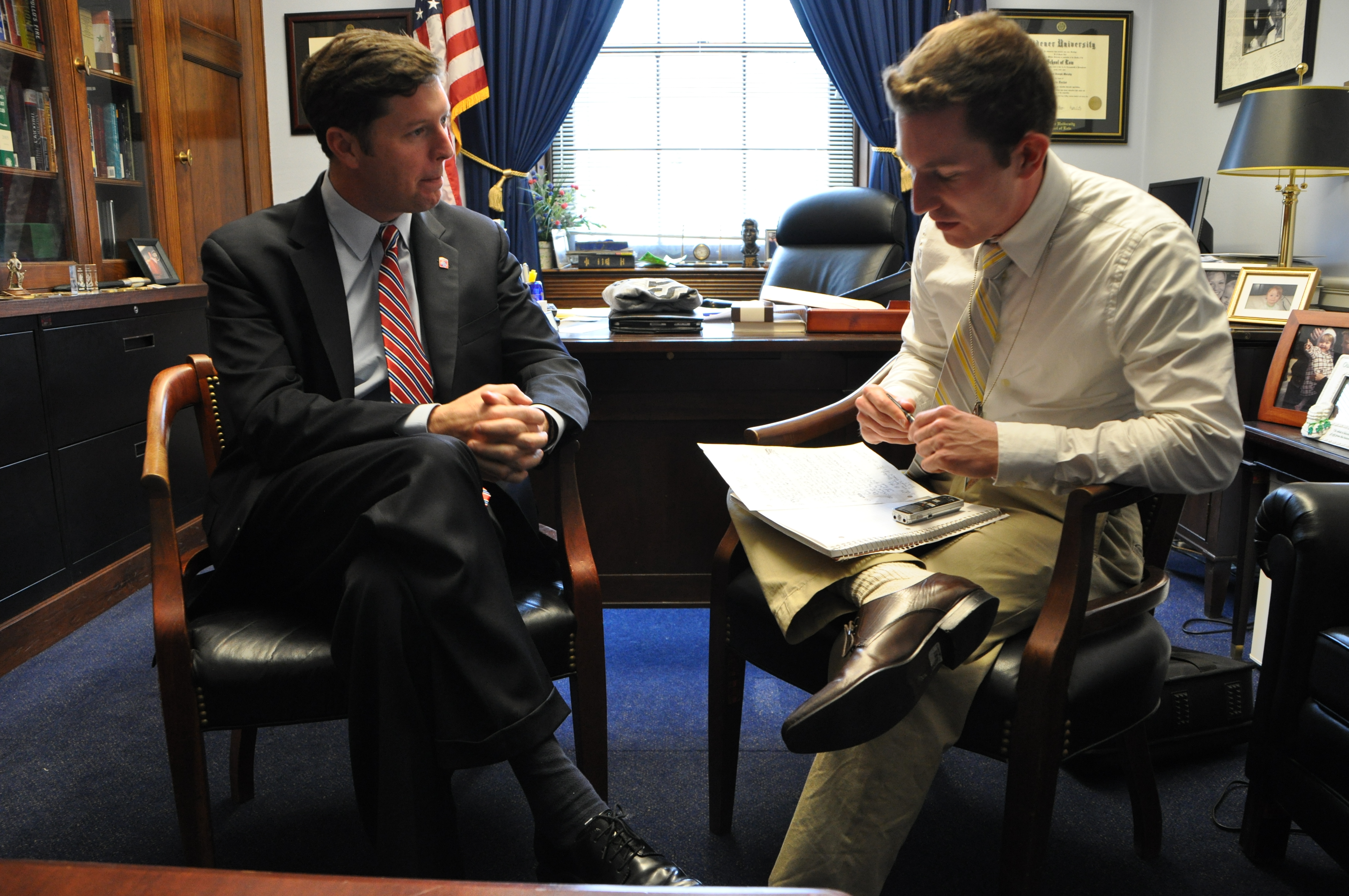
During his earliest years at the paper, Chibbaro said he suspects that some private companies or congressional representatives may not have returned The Blade’s calls, either because of bigotry or because they weren’t The Washington Post. But overall, he said, he doesn’t remember much outward bigotry in response to The Blade’s coverage. The district already had a large LGBT population, and the city council was largely composed of Black civil rights activists, many of whom were already allied with the community.
“They tended to be progressive and they understood issues of discrimination and so forth,” Chibbaro said. “They were sympathetic.”
Playing politics
Since the turn of the century, The Blade has experienced some obstacles in its efforts to cover various presidential administrations. During former President George W. Bush’s second term, The Blade’s White House press corps credentials were revoked. They were reinstated, without The Blade’s prompting, when President Barack Obama was elected. The paper has complained, however, that the latest administration has ignored questions from its political reporter, Chris Johnson. Before her recent resignation, Johnson said former White House press secretary Sarah Huckabee Sanders refused to call on him during briefings.
[the_ad id=”667878″]
Even if the Trump administration ignores The Blade’s reporters, Naff said its important the paper maintain a presence among the nation’s top reporters. Without an LGBT publication there, Naff said, the mainstream media would be unlikely to ever press the administration issues facing the larger community.
“There has been an ongoing crackdown on gay people in Chechnya,” Naff said. “Gay people have been murdered, they’ve been rounded up, they’ve been tortured, they’ve been put in prisons, and not one question about it has been asked at the White House briefings from the mainstream press. If we’re not there, then those questions are not going to be asked.”

Since 2017, Naff said, the paper has dispatched reporters to Mexico, El Salvador, Honduras and Guatemala to cover LGBT rights in Latin America. The Blade has also been following the fight for LGBT rights in Cuba, and has increased its coverage of Puerto Rico in the aftermath of Hurricane Maria.
“Certainly the scope of The Blade’s influence and coverage has grown tremendously from the early days,” Naff said. “Our mission has always been to cover the community, whether it’s in D.C. or nationally or internationally, so we’ve really tried to broaden our focus.”
The Blade’s effort to expand its coverage stands out, especially given the wider losses to the LGBT press in 2019. In March, Grindr shut down its LGBTQ publication and laid off the site’s entire staff. All but one staffer was cut from Buzzfeed’s LGBT desk during the company’s mass layoffs in January. A recent Vice feature by reporter David Uberti reveals that Out Magazine, a popular LGBT magazine founded in the 1990s, almost folded this June after months of funding issues. At one point, the magazine owed up to $500,000 in backpay to its contributors, Uberti reported.
Some reporters within the community have also expressed concern that the quality of LGBT coverage in the mainstream press has been underwhelming — even dangerously underinformed — given proposed Trump administration policies that could increase discrimination against the transgender community.
In late May, The New York Times drew ire from LGBT reporters and readers for a piece on chest-binding written by columnist Amy Sohn. Critics argued that the story primarily focused on the physical health problems that can be caused by incorrect use of binders, instead of highlighting the mental health benefits (like reduced suicide risk) that compression devices afford wearers. In a recent report published by The Outline, freelance reporter Katelyn Burns analyzed The New York Times’ decision to include a source who had virtually no prior history of commenting on trans issues outside of remarks posted on a website opposing medical transition.
In 2018, The Atlantic received significant pushback for publishing a feature on children and teenagers who seek medical transition. The story, written by a cisgender journalist who has been widely panned for his coverage of the transgender community, largely featured sources who were not actually trans. Instead, it highlighted a minority of patients who seek out medical transition but later discover they are cisgender.
Those kinds of pieces are in line with a larger problem Naff said he has noticed in mainstream coverage of LGBT people: the failure to go beyond “overtly gay” stories.
“And I think gay specifically, because they don’t do a good job of covering the rest of the community,” Naff said. “I think where they fall apart and fall down is covering the LGBT angle to broader stories.
“Trans women are dying in custody, and people with HIV/AIDS are dying because they don’t have access to medication,” he said. “There are special, unique circumstances for LGBT migrants. And those angles aren’t covered by the mainstream.”
Brown agreed, saying that The Blade would continue to serve a vital role in the press for as long as mainstream coverage remains shallow.
“I do believe the Blade will be here another 50 years,” Brown said. “National media tunes in most often — to my chagrin — in June and wants to do a story on Pride. We’re just a deeper and more complex and more complete community. The Blade documents that.”
LGBT Publications
The Washington Blade is one of a few publications still in operation that can trace its founding back to the Stonewall Uprising. Though it is the oldest LGBT newspaper still in circulation, it is predated by two years by The Advocate magazine, which is the oldest American LGBT publication overall. The Bay Area Reporter claims the title of oldest continuously published LGBT newspaper. The following list includes several LGBT publications that were founded before 2000 and are still operating today.
- The Advocate — 1967
- The Washington Blade — 1969
- The Bay Area Reporter — 1971
- Philadelphia Gay News — 1976
- Seattle Gay News — 1977
- San Francisco Bay Times — 1978
- Bay Windows — 1983
- Dallas Voice — 1984
- Windy City TImes — 1985
- Q-Notes — 1986
- Curve Magazine — 1990
- Metrosource — 1990
- Out Magazine — 1992
- Between the Lines — 1993
- Gay City News — 1994
- Instinct Magazine — 1997

